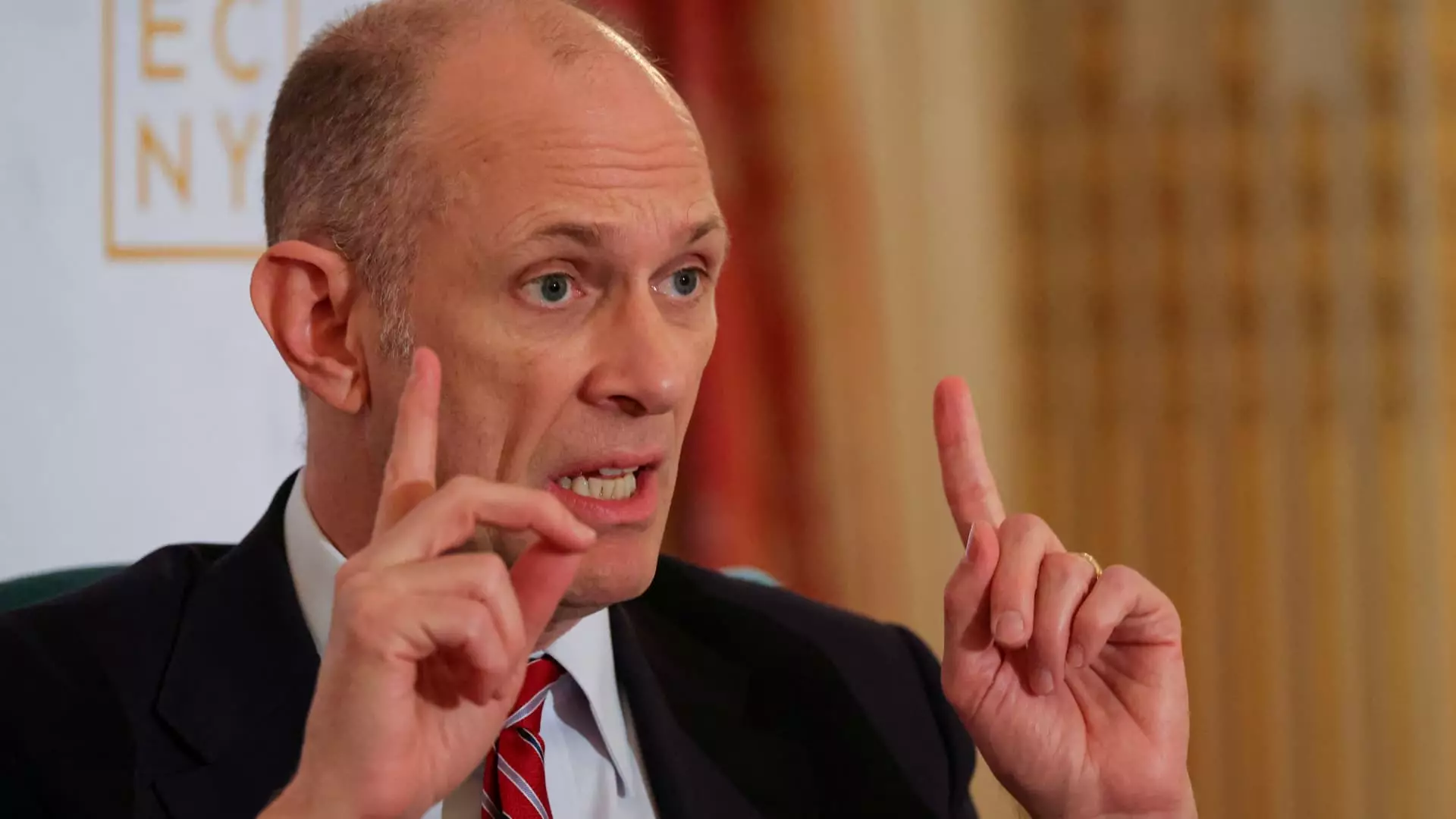As the financial landscape continues to be rocked by President Donald Trump’s provocative tariff threats, the implications of such a reckless approach to trade cannot be overstated. Chicago Federal Reserve President Austan Goolsbee aptly voiced concerns that the unprecedented volatility in trade policy is complicating monetary policy and stalling necessary changes to interest rates. While the idea of tariffs may be politically appealing for some, their overarching impact—particularly through a lens of economic stability—could spell disaster for the average American.
The ominous cloud created by Trump’s recent declaration of a staggering 50% tariff on European Union products is a glaring example of how hasty pronouncements can send shockwaves through the markets. Such instability does not just affect high-level financial titans; it trickles down to everyday consumers, who may soon find themselves grappling with inflated prices on essential goods. Goolsbee’s harbinger of stagflation highlights that in an age where a balanced economic ecosystem is crucial, these ill-conceived trade decisions could push the country into a worrying chokehold of stagnant growth coupled with rising prices.
Pushing Back Against Economic Realities
The current political climate has seen many clinging to the notion that increasing tariffs will lead to job creation within the United States, a narrative bolstered by fervent nationalism. However, as professionals like Goolsbee recognize, the real-world implications of such decisions reveal a more distressing reality. In his CNBC interview, Goolsbee’s acknowledgment that “everything’s always on the table” hints at a troubling indecisiveness among policymakers navigating an already turbulent seas of economic uncertainty. While he remains cautiously optimistic about potential interest rate reductions, the reality remains stark: uncertainty breeds hesitance and fear in the financial markets.
The astute observations regarding Apple’s potential 25% tariff on imported iPhones serve as a microcosm for broader economic implications. Sure, the impact of a pricier iPhone might seem minor on a macroeconomic scale, but it underscores a deeper principle: the interplay of trade policy and public sentiment. The truth remains; frustrations over rising prices are rarely contained. Consumers feel the pinch, and it fosters an environment ripe for discontent, further complicating the relationship between fiscal decisions and public perception.
A Central Bank in a Political Quagmire
Central bankers like Goolsbee often walk the razor-thin line separating economic independence from political pressure. They must tread lightly, adhering to the principles of sound economics while contending with a political framework that seems increasingly disconnected from economic realities. A commitment to maintaining a stable economic environment ought to be paramount, yet ongoing tariff discussions and their associated ramifications overshadow critical monetary policy decisions.
In the face of such pronounced uncertainty, the Fed’s Federal Open Market Committee (FOMC) is left grappling with the dilemma of how to respond without appearing reactive or politically motivated. Goolsbee’s perspective as a voting member emphasizes that despite the prevailing pressures, they recognize the importance of solid economic indicators—a return to a stable scenario resembling pre-tariff norms. His hopefulness for returning interest rates well below current levels speaks to a desire for restoration rather than rapid adjustments buoyed by political whims. The ambition to navigate back toward an environment of reasonable interest rates requires a careful analysis of fiscal policies and their immediate community impacts.
Charting a Course Amid Uncertainty
The upcoming June meeting of the FOMC presents an opportunity for policymakers to reassess their priorities. As Goolsbee indicated, there needs to be a concerted effort to avoid the pitfalls of martial or political dogma as it pertains to economic policymaking. It is vital that they emphasize data-driven decision-making and prioritize long-term stability over short-term victory narratives that could ultimately jeopardize the economic climate.
In a world fraught with risks inherent to aggressive tariff strategies, the path forward will require a robust commitment to inclusive economic strategies. Only through prioritizing clarity amid the chaos can central bankers hope to avert a deeper economic malaise stemming from haphazard trade policies. It is imperative that we refocus our collective efforts on fostering sustainable growth and navigate the storm with a tactical approach that advocates for the long-term economic good of the entire nation.


Leave a Reply